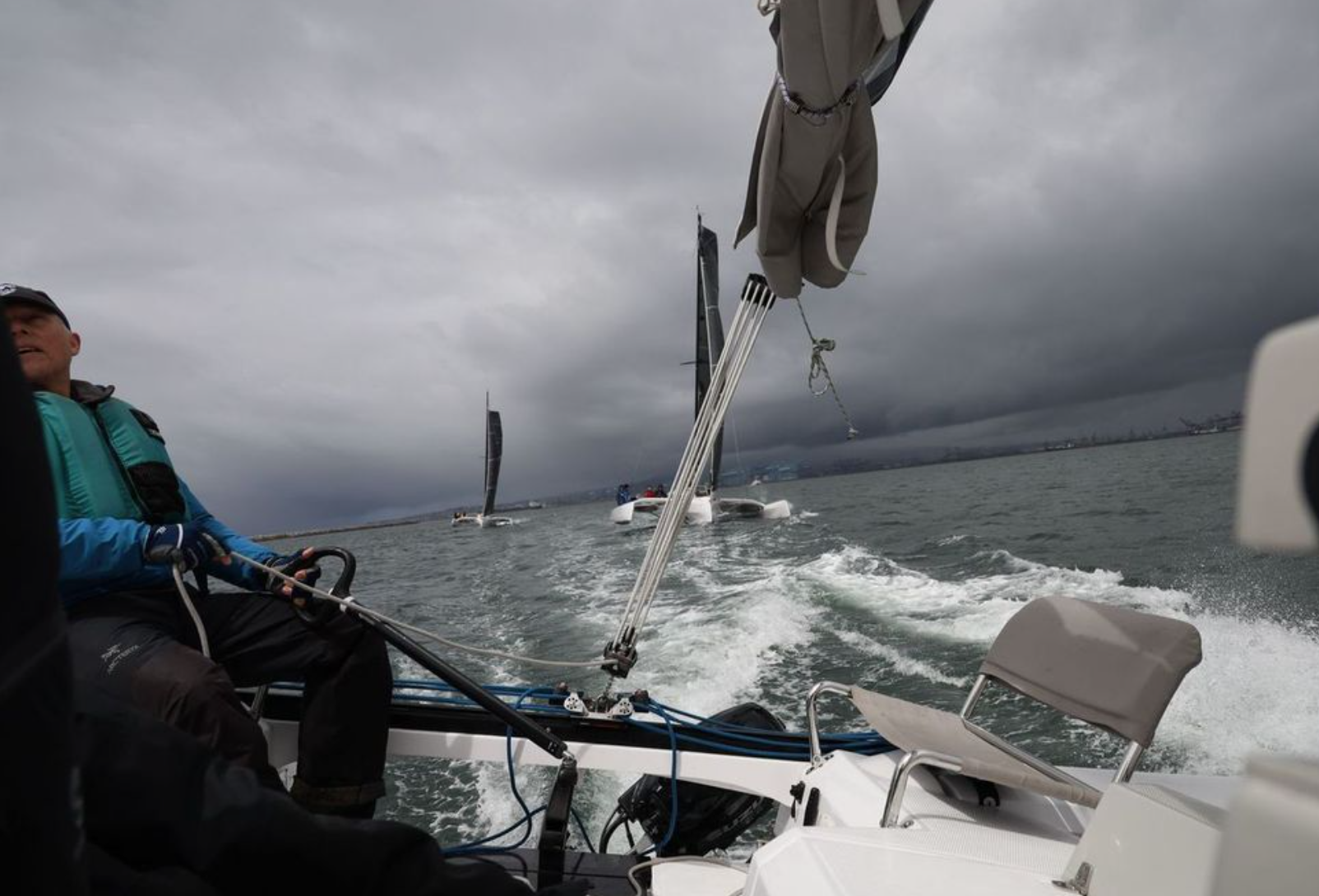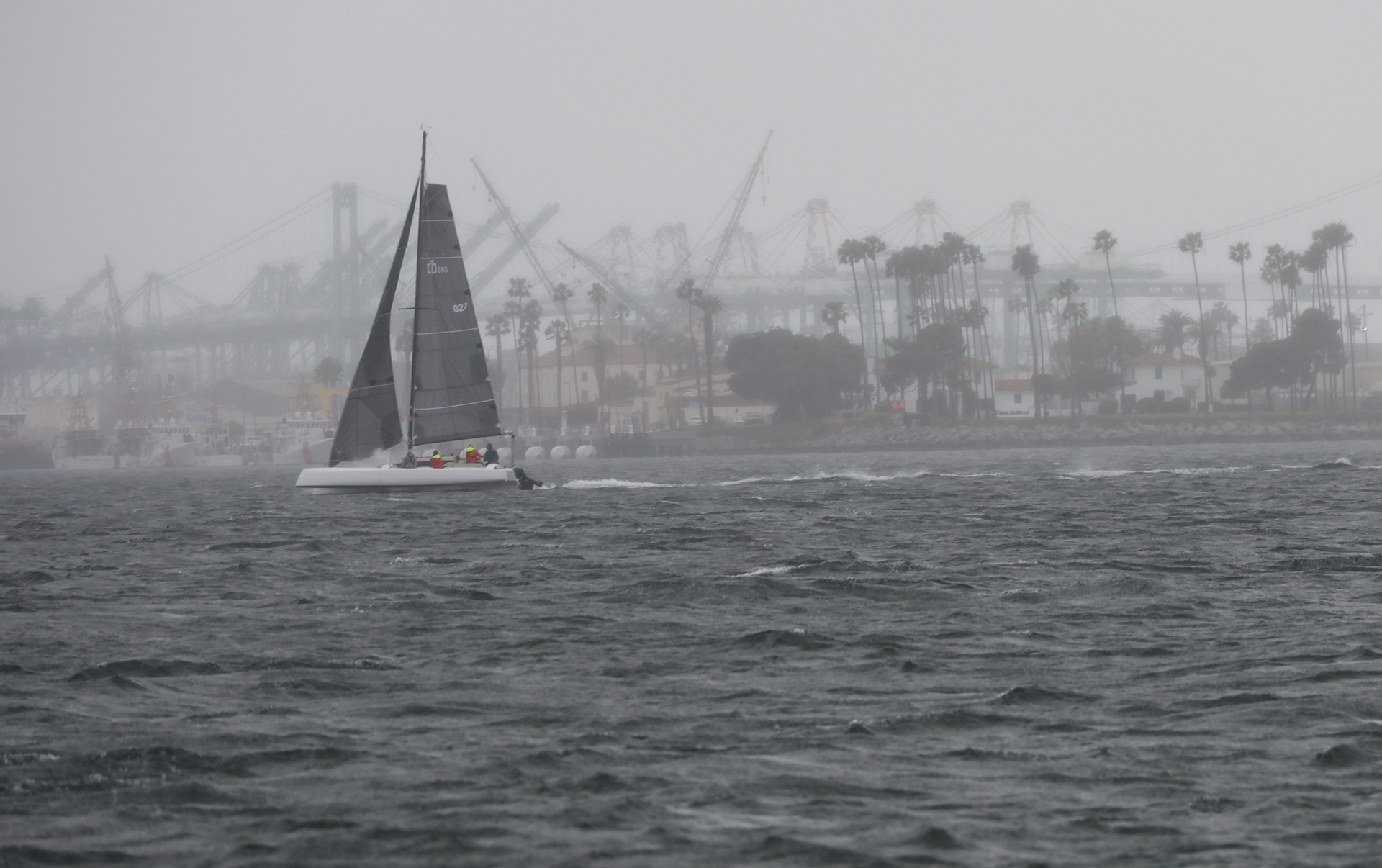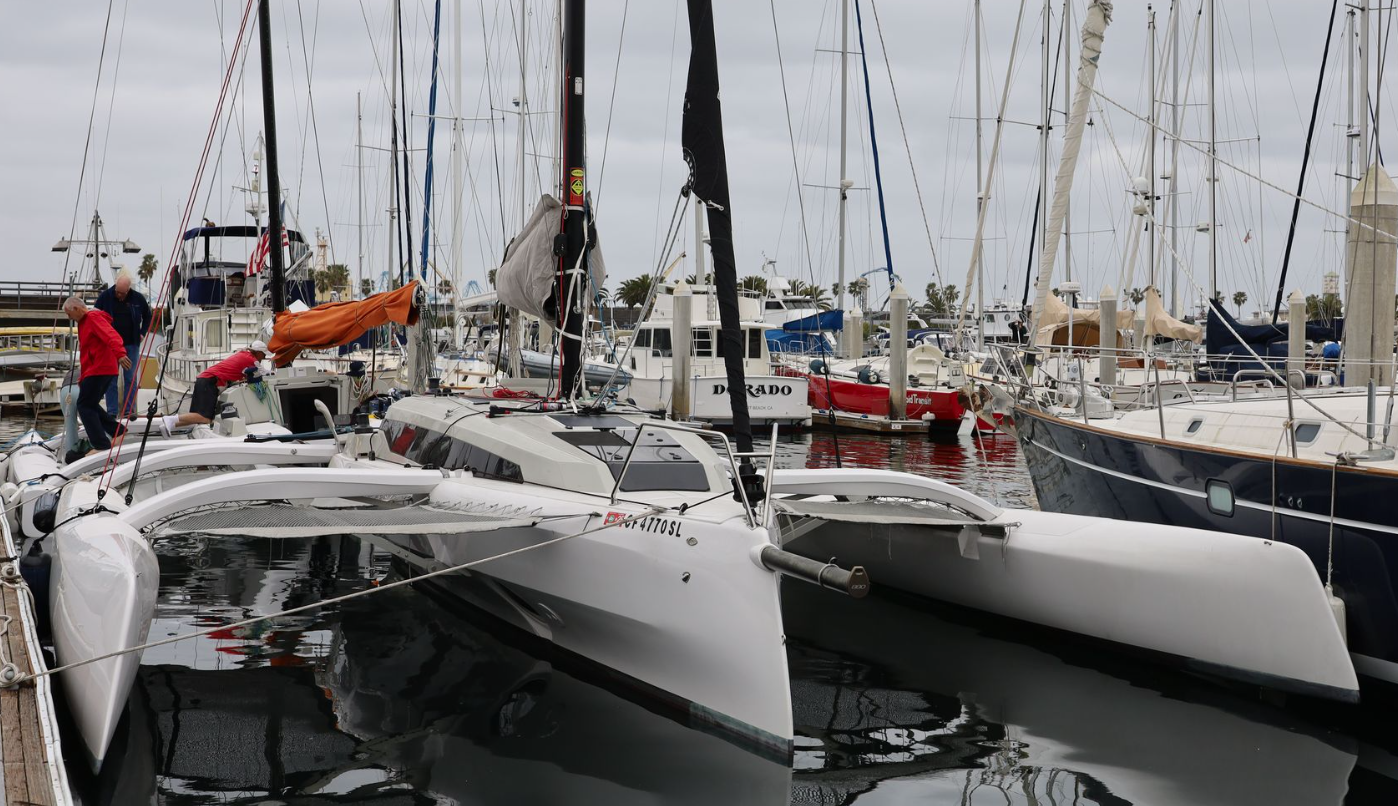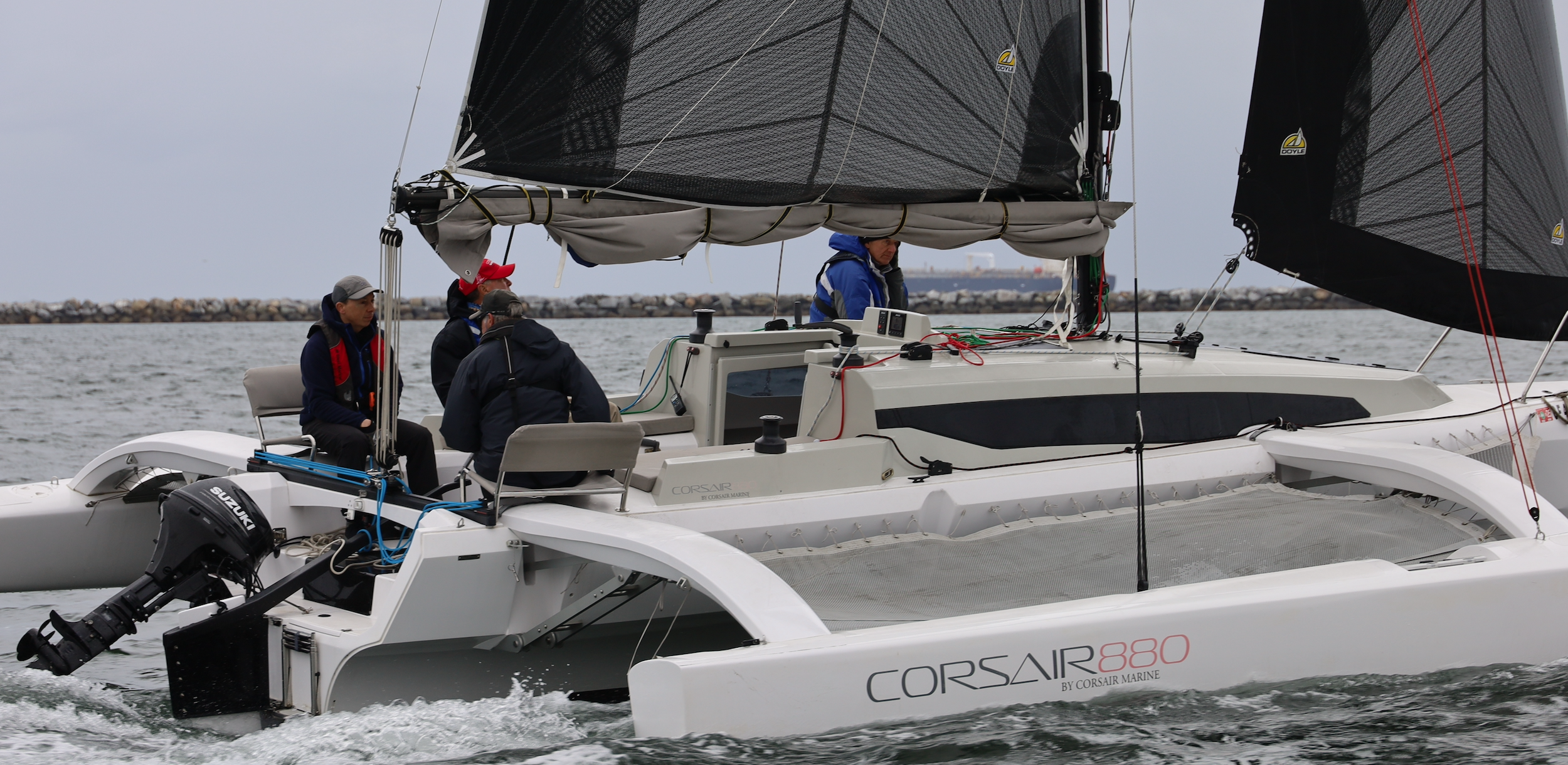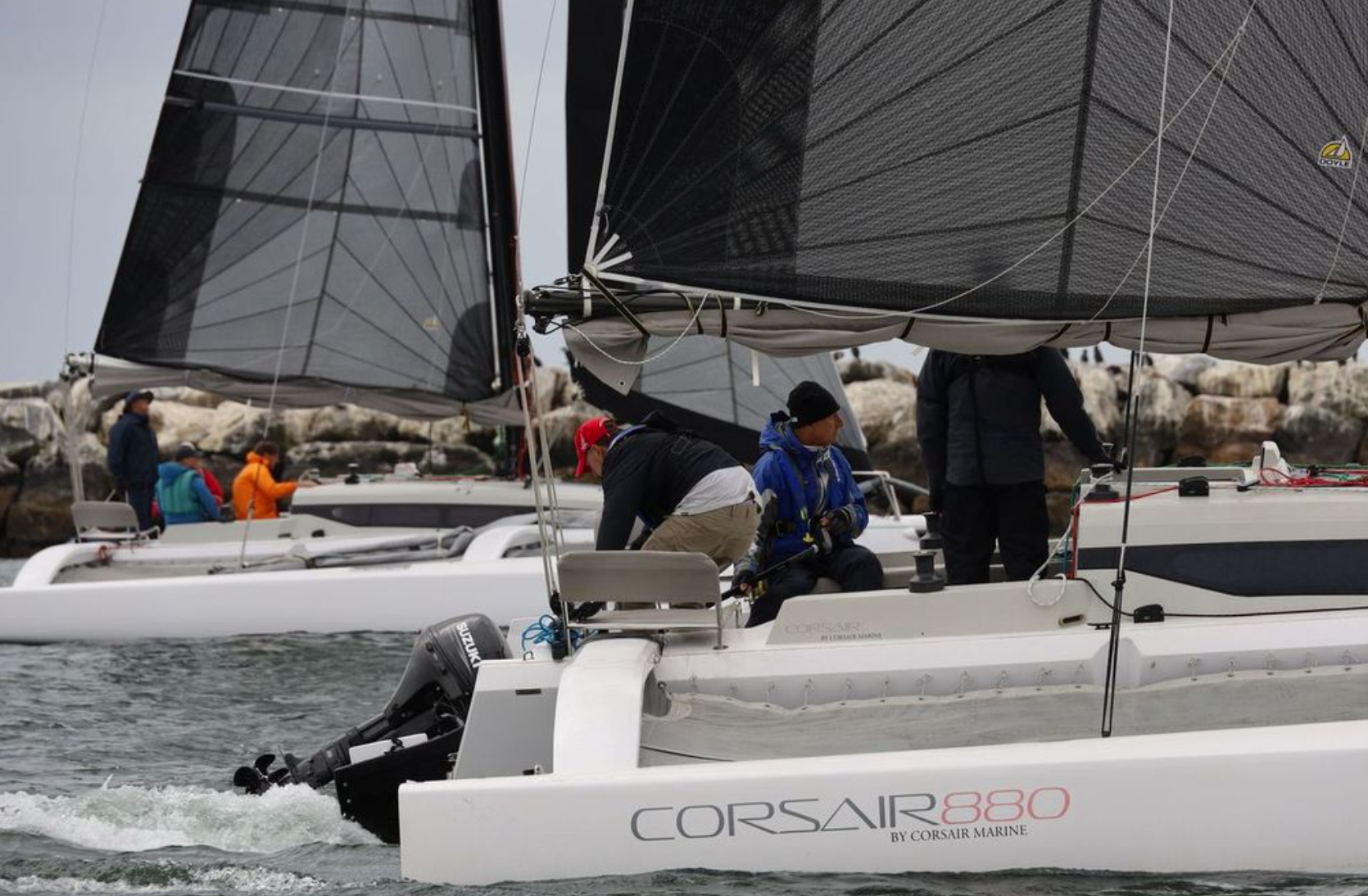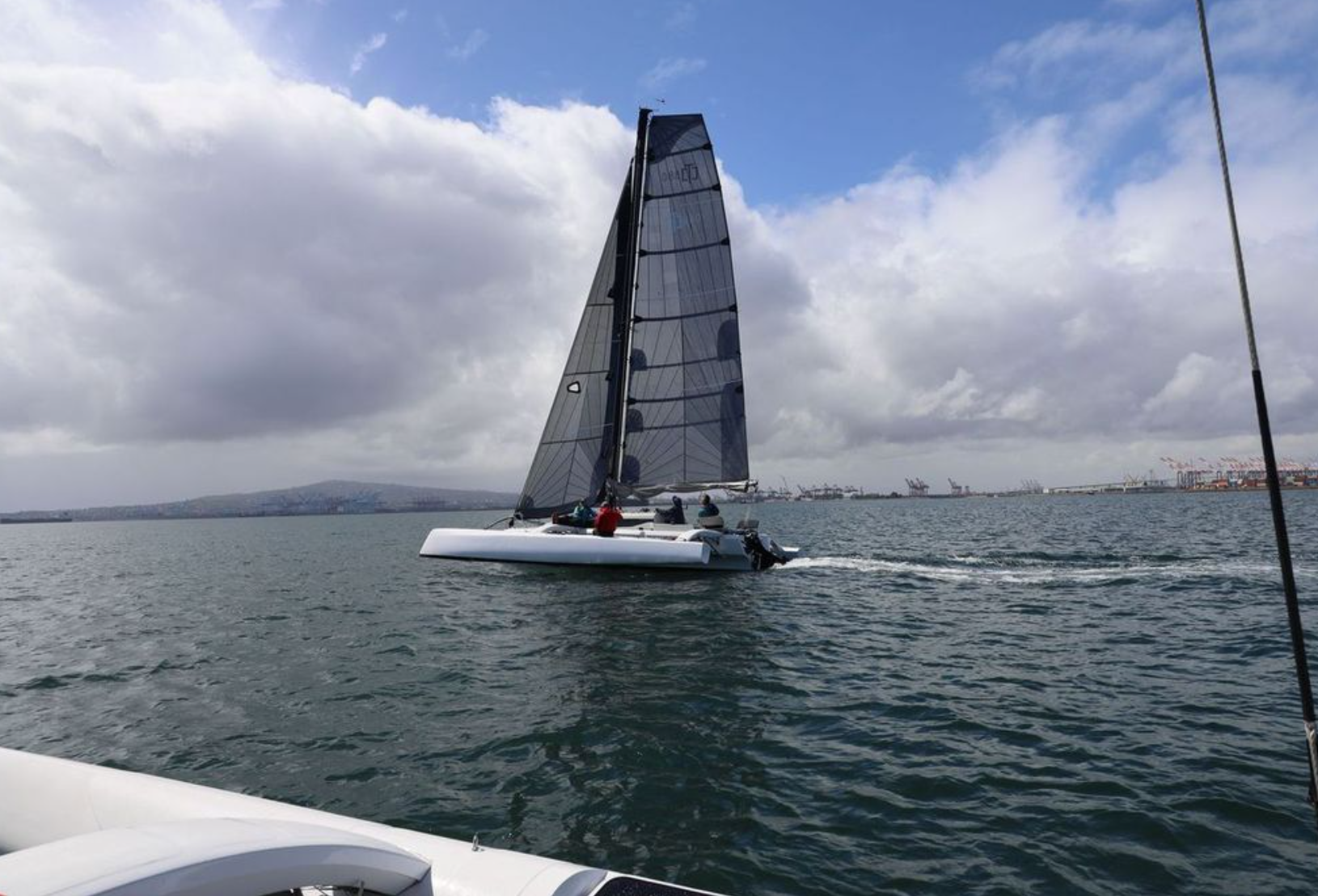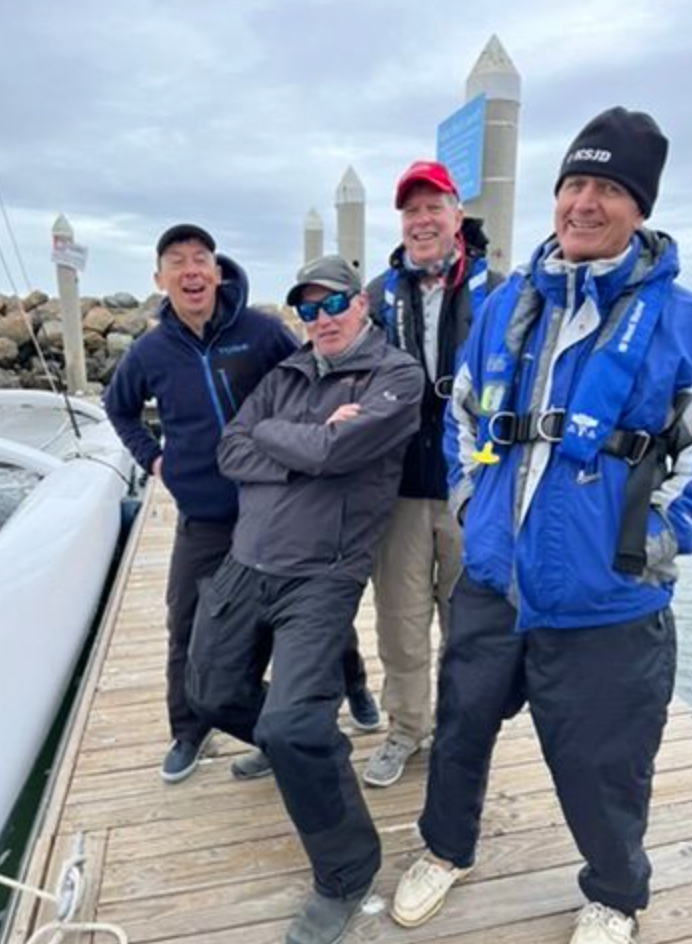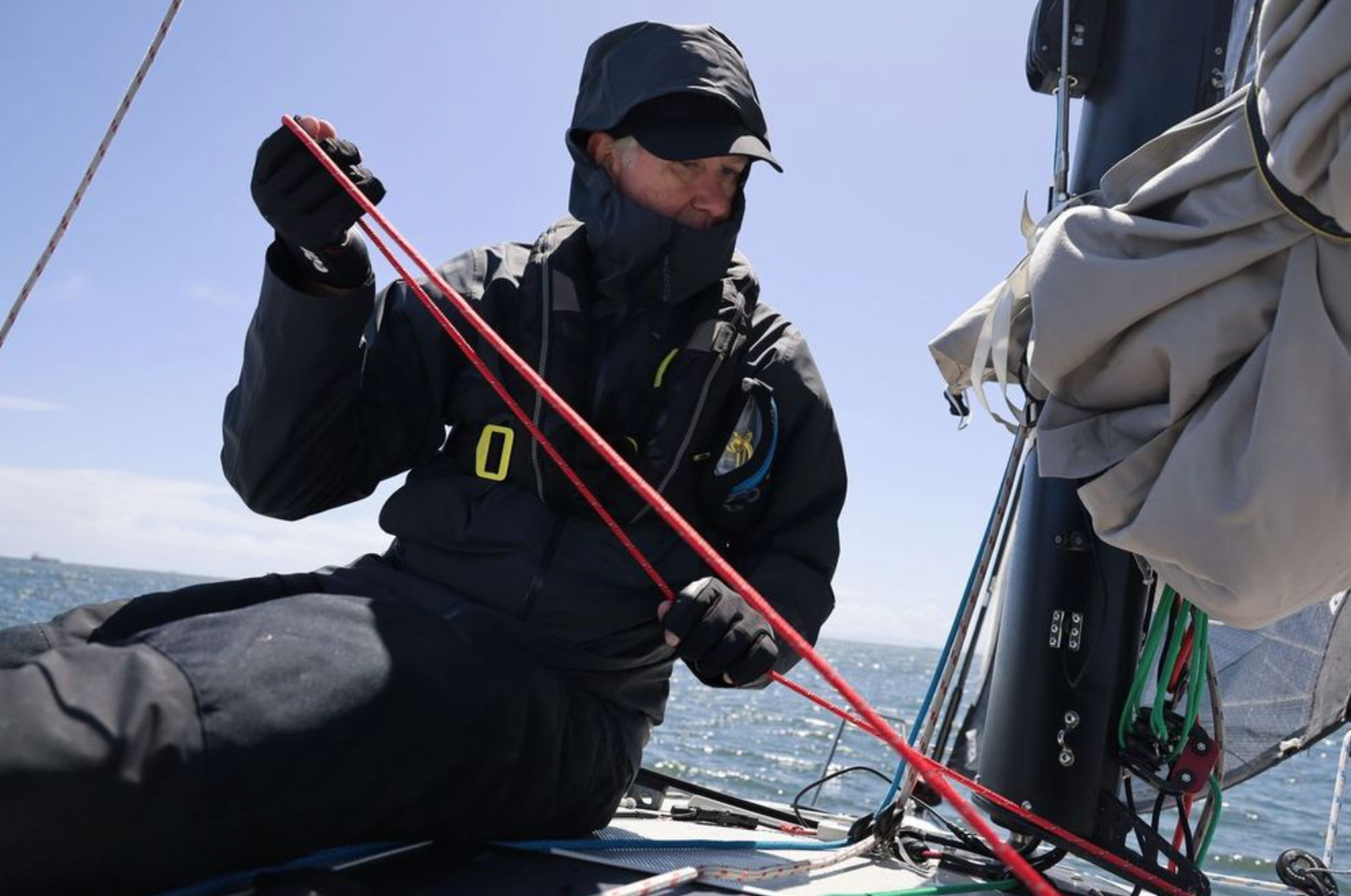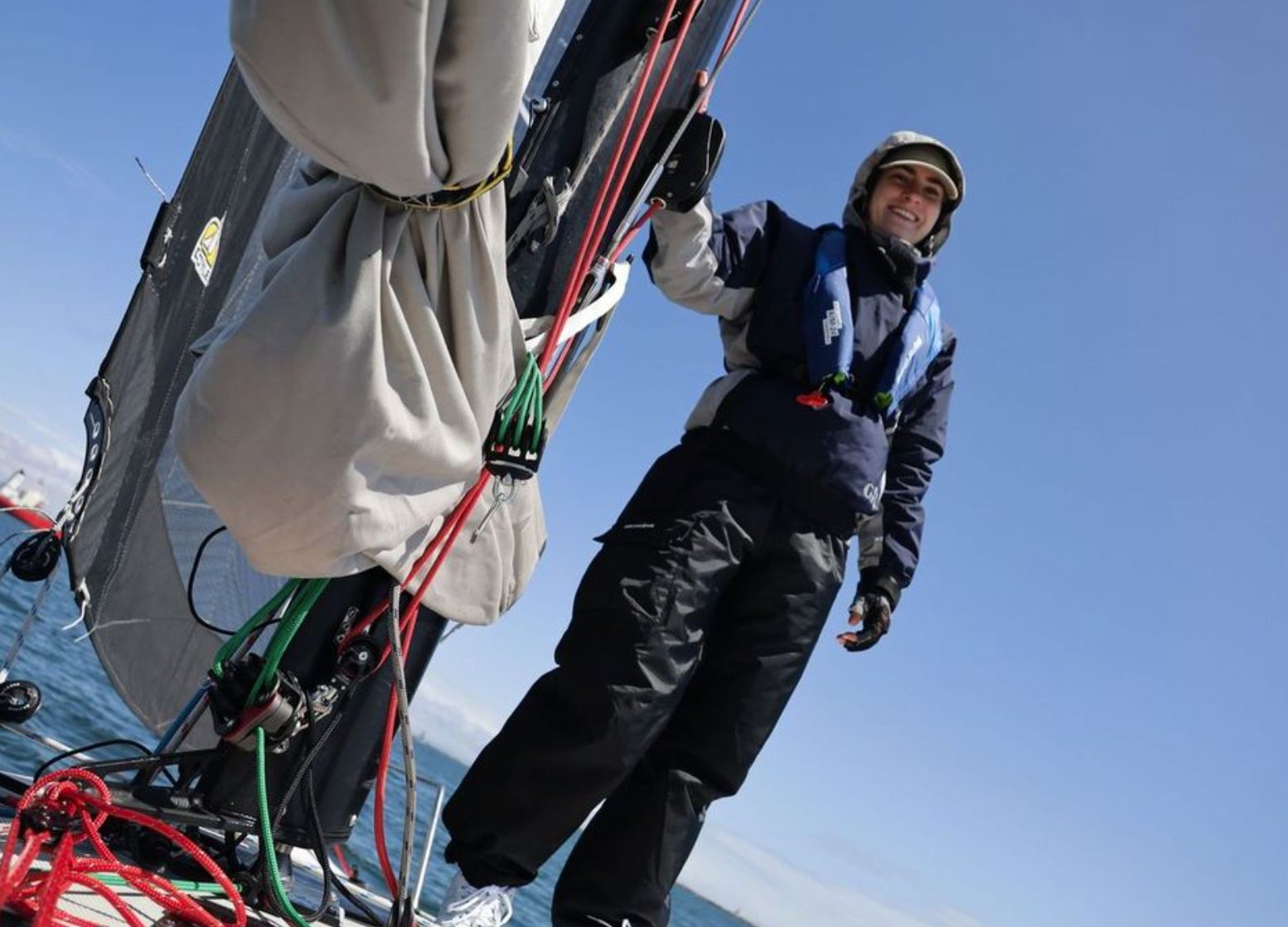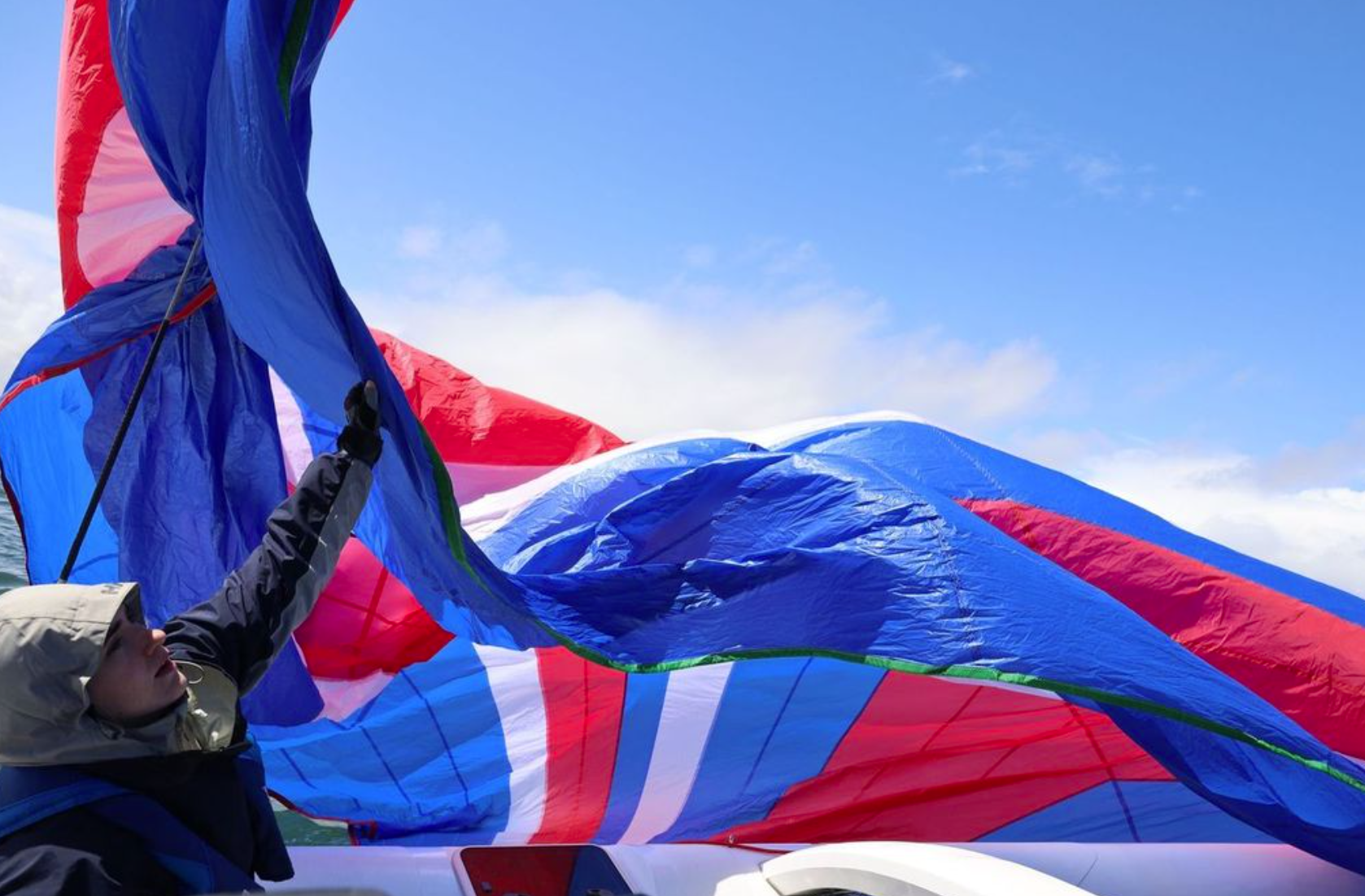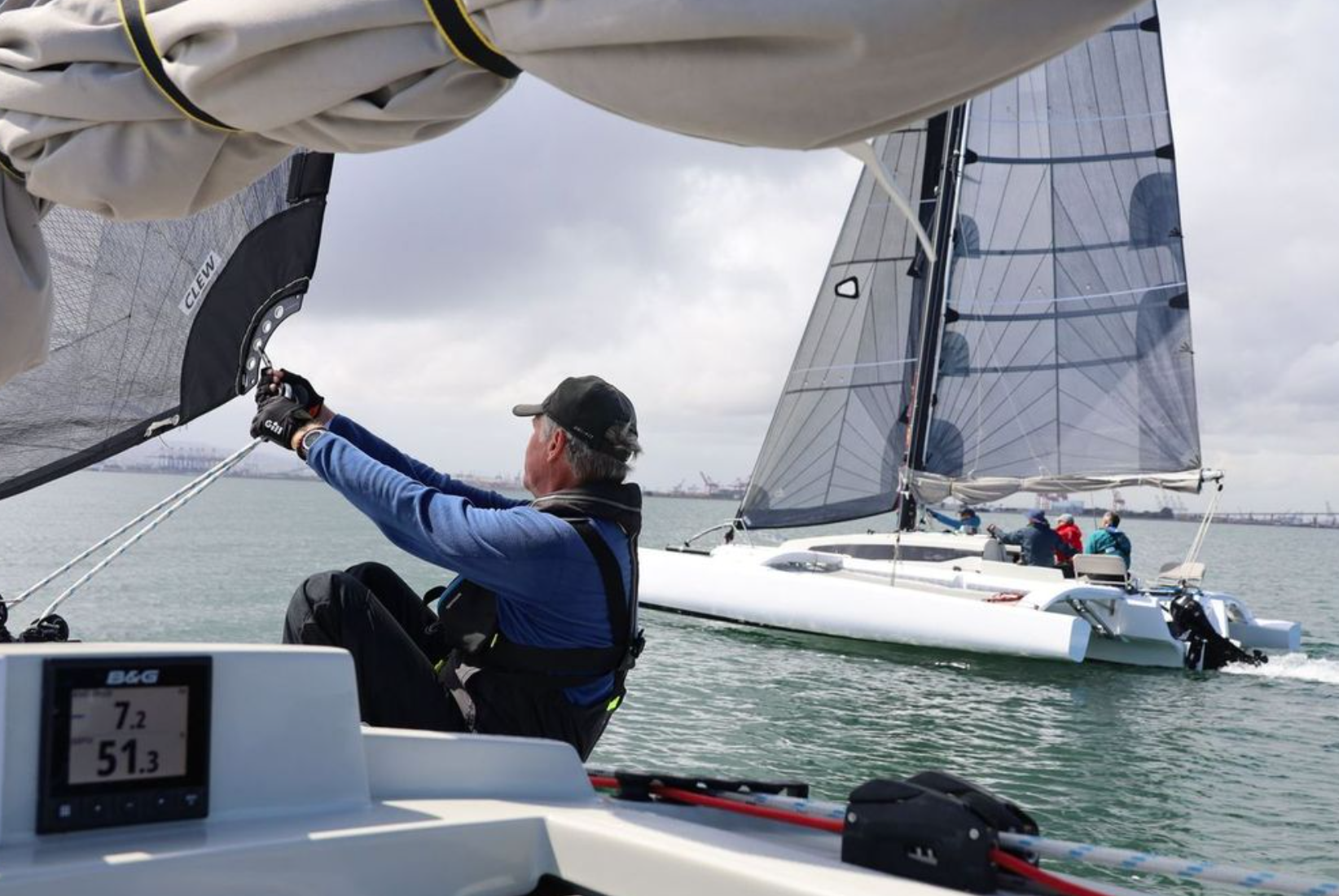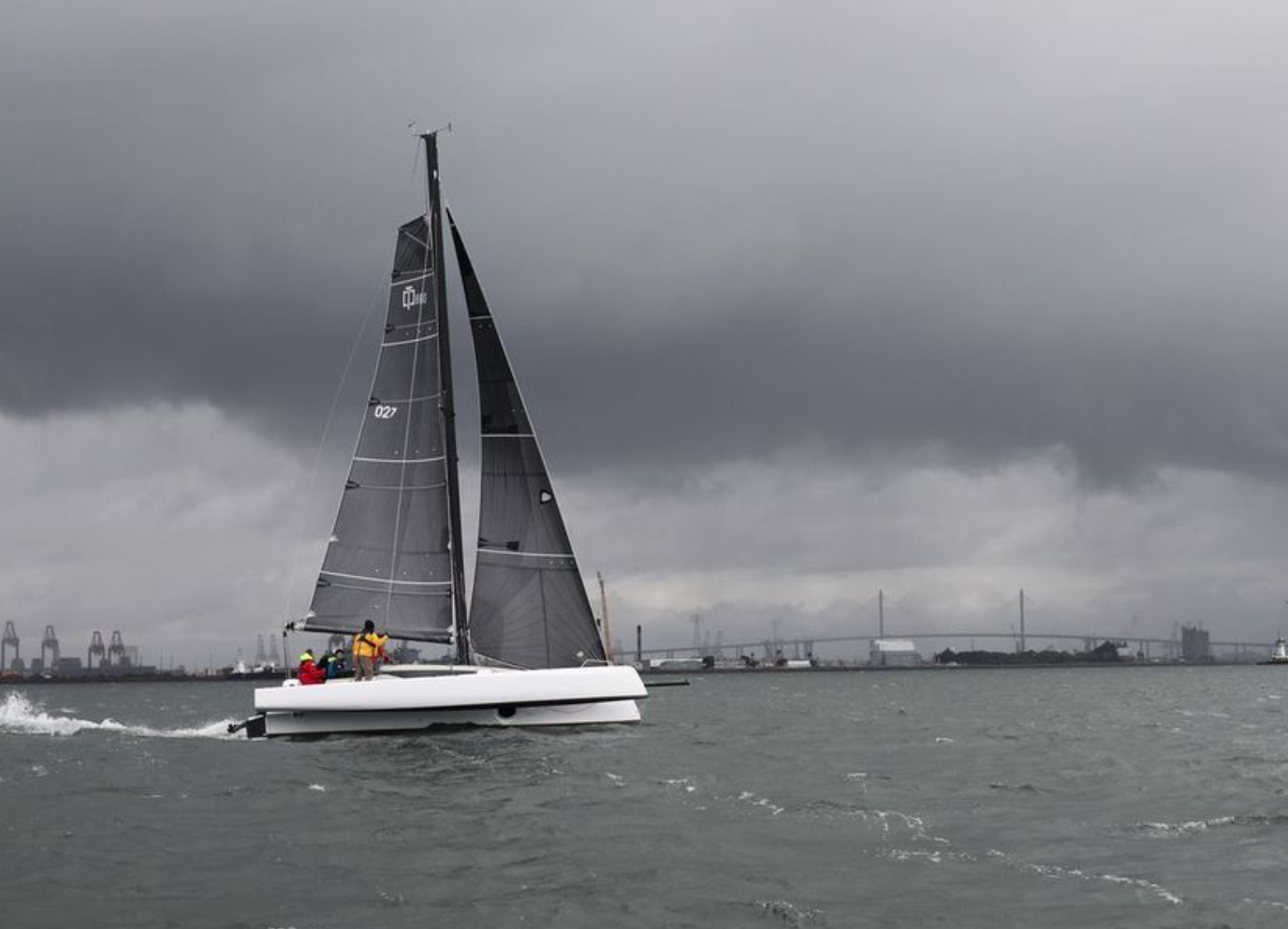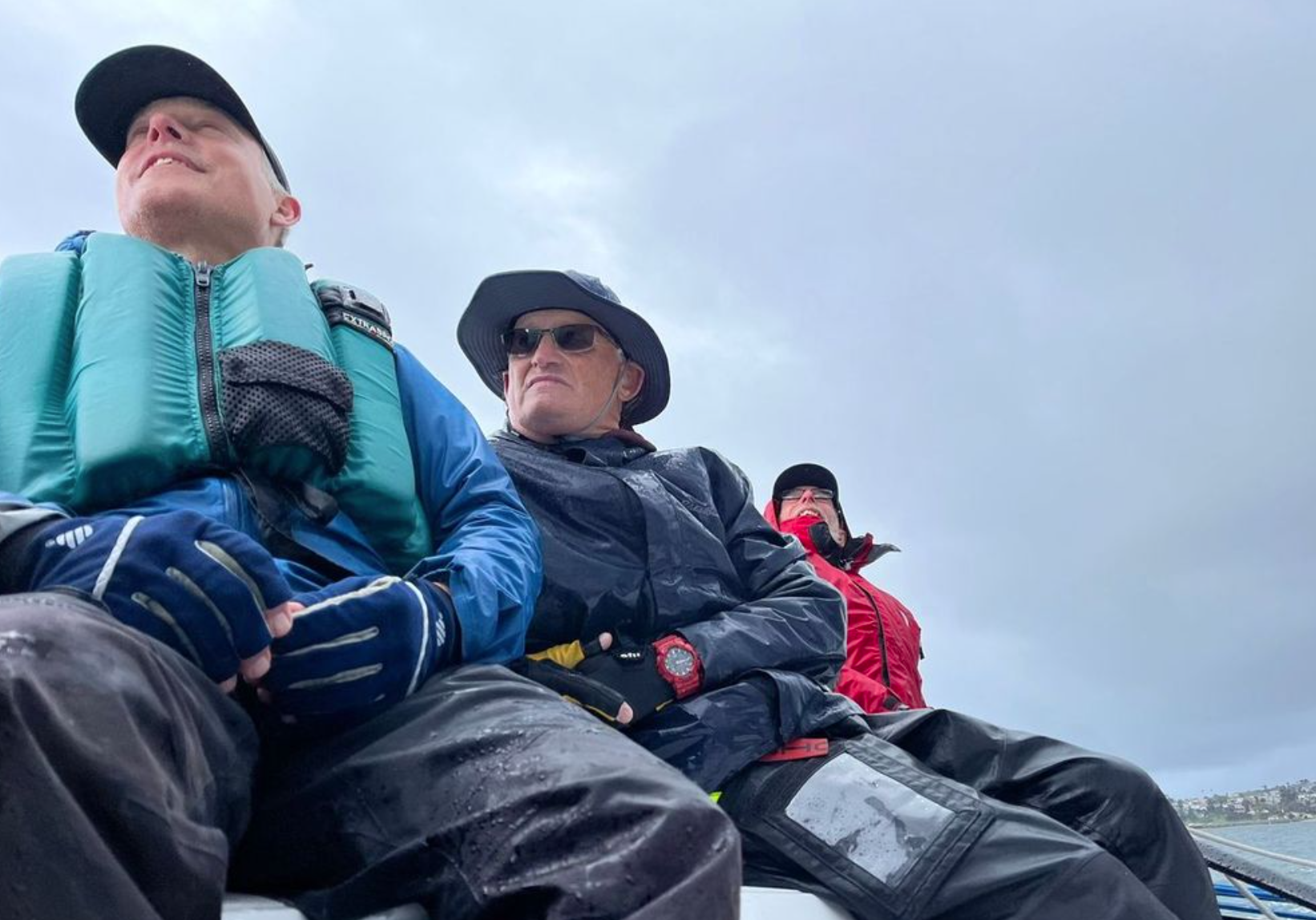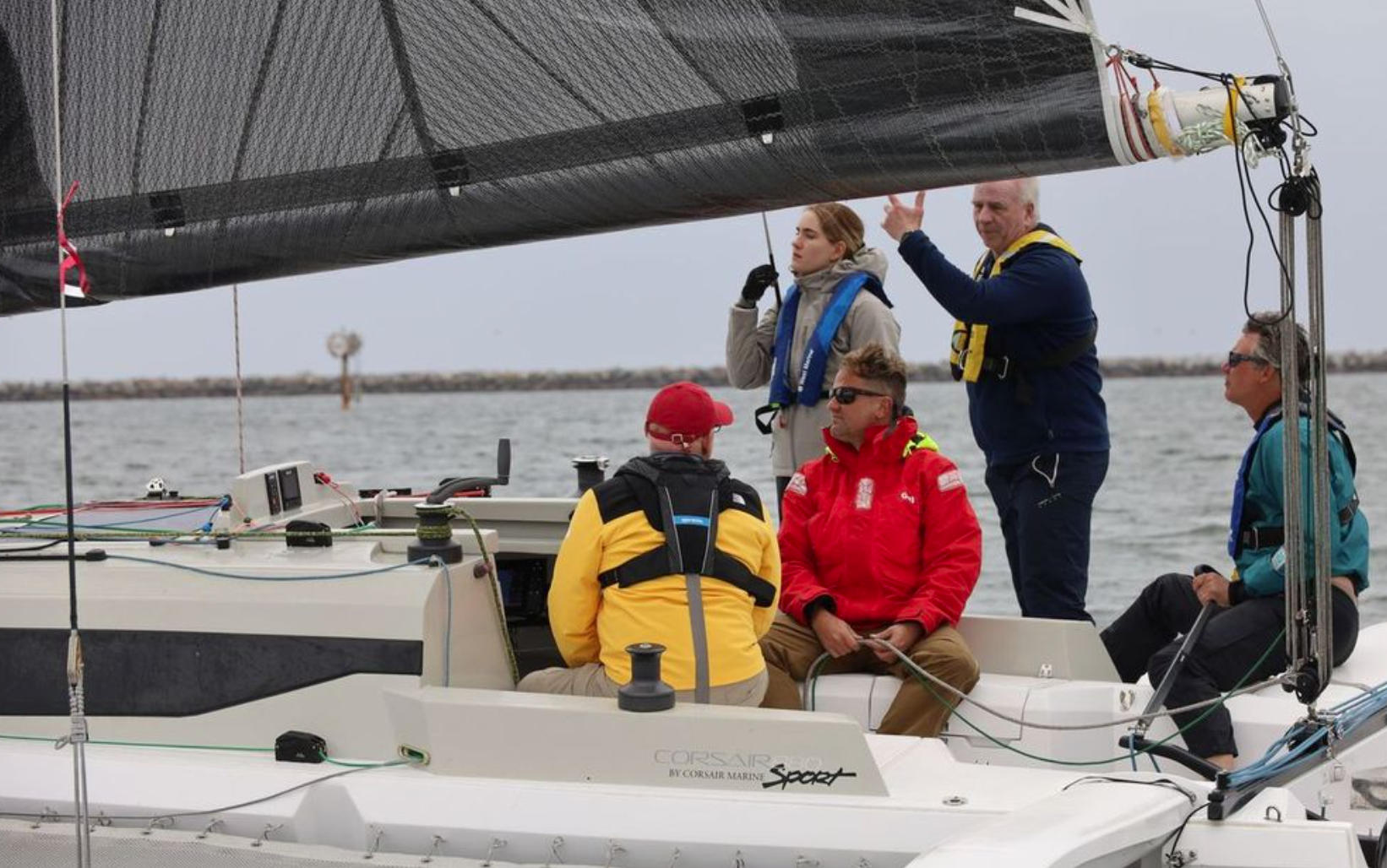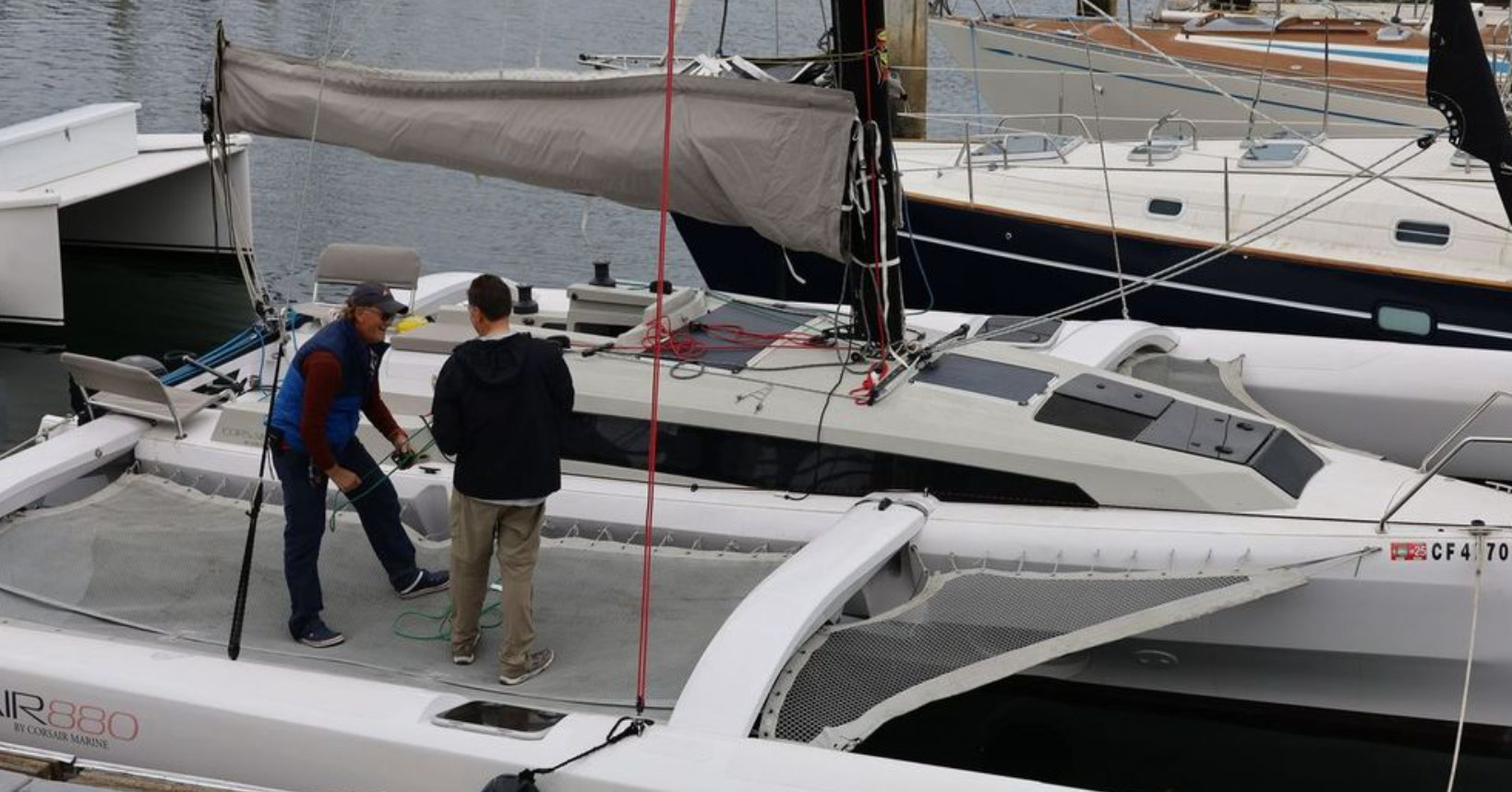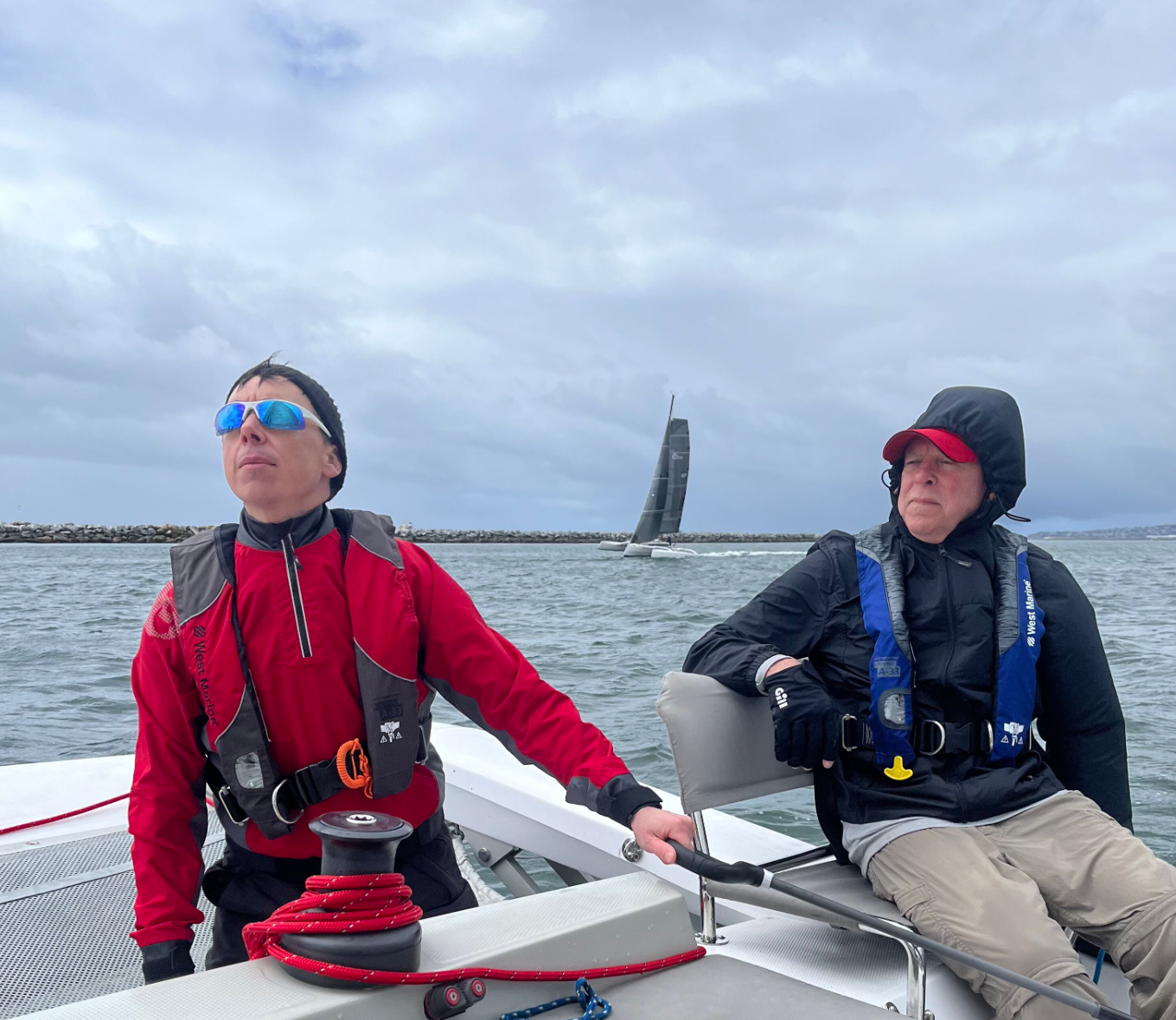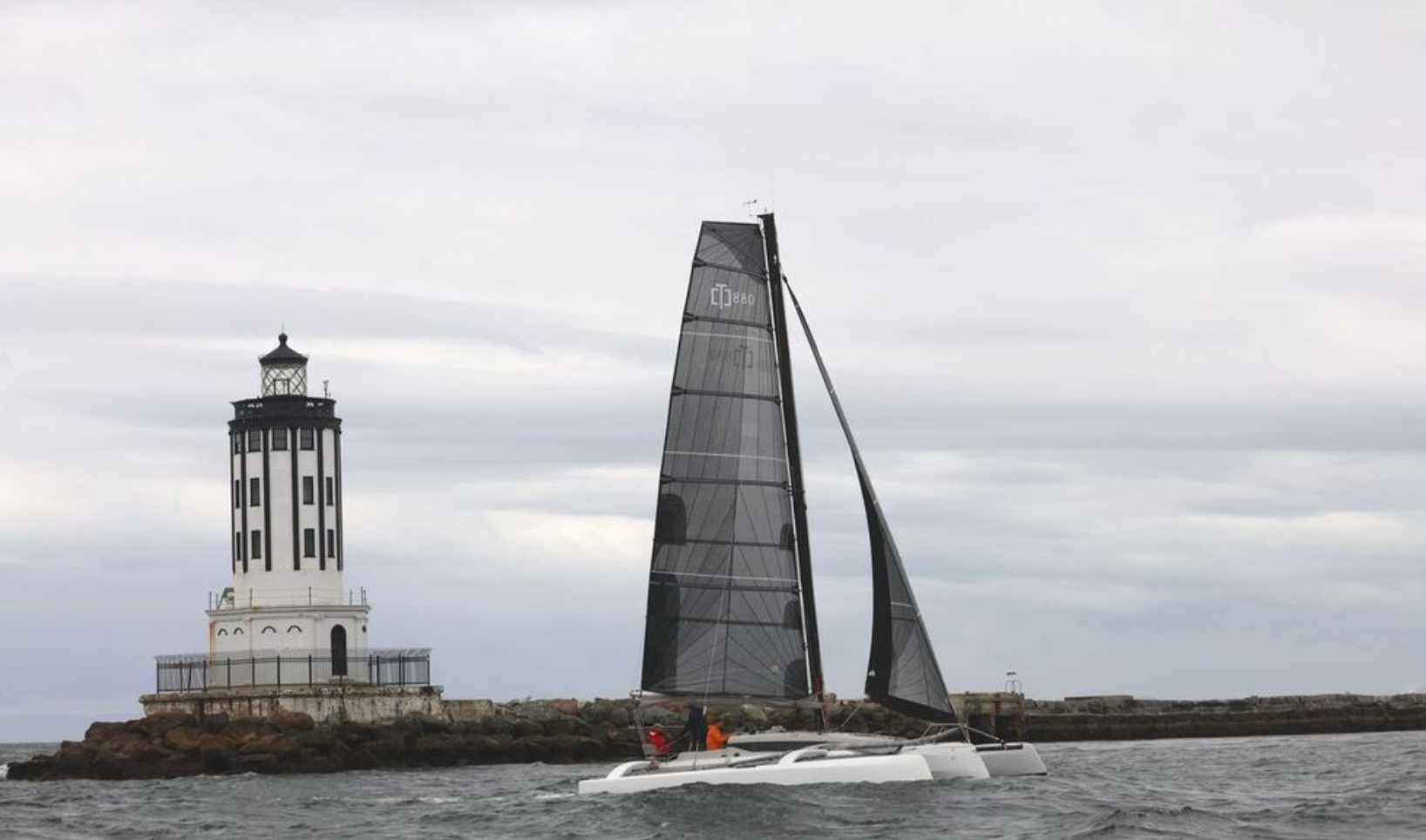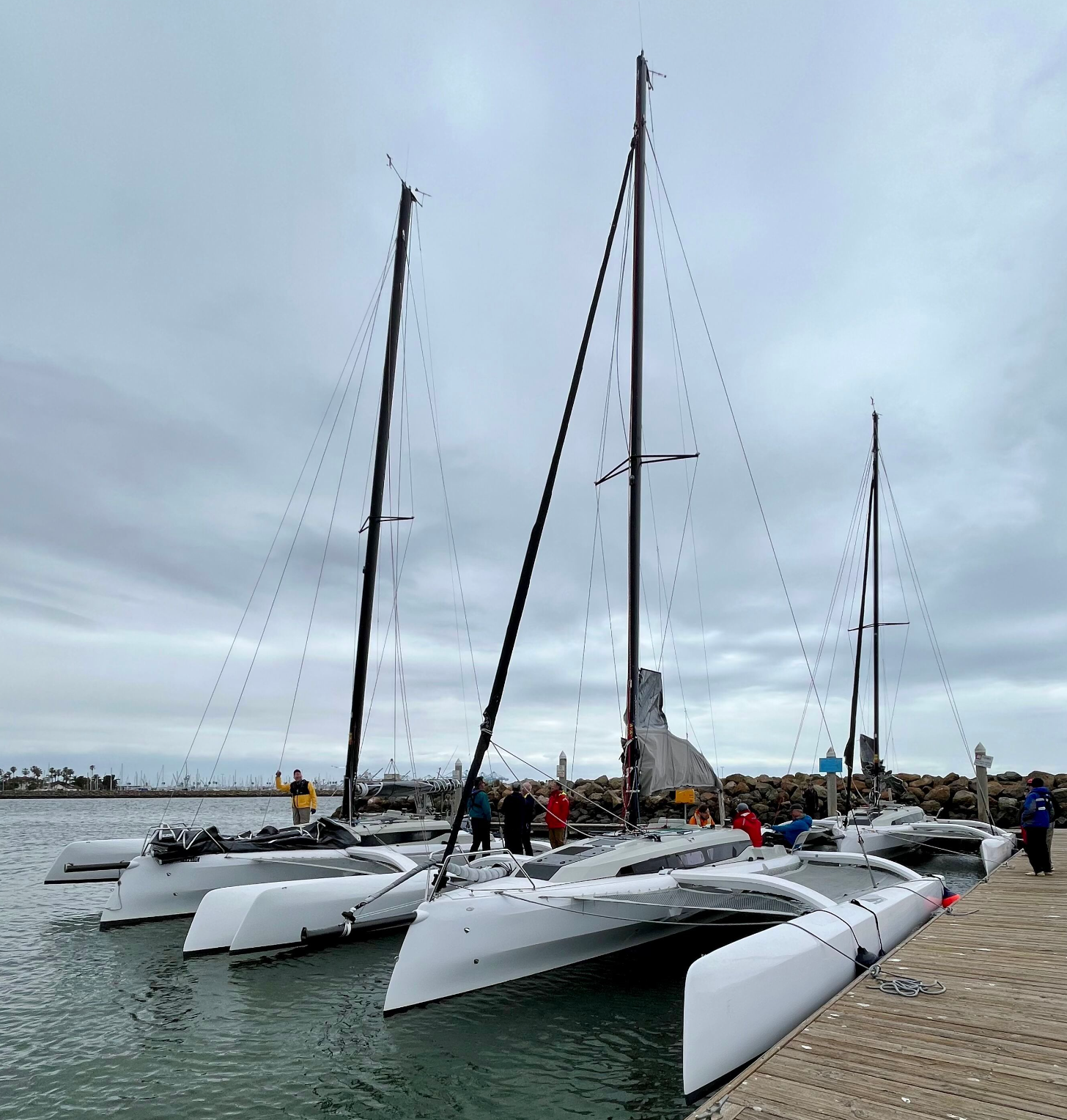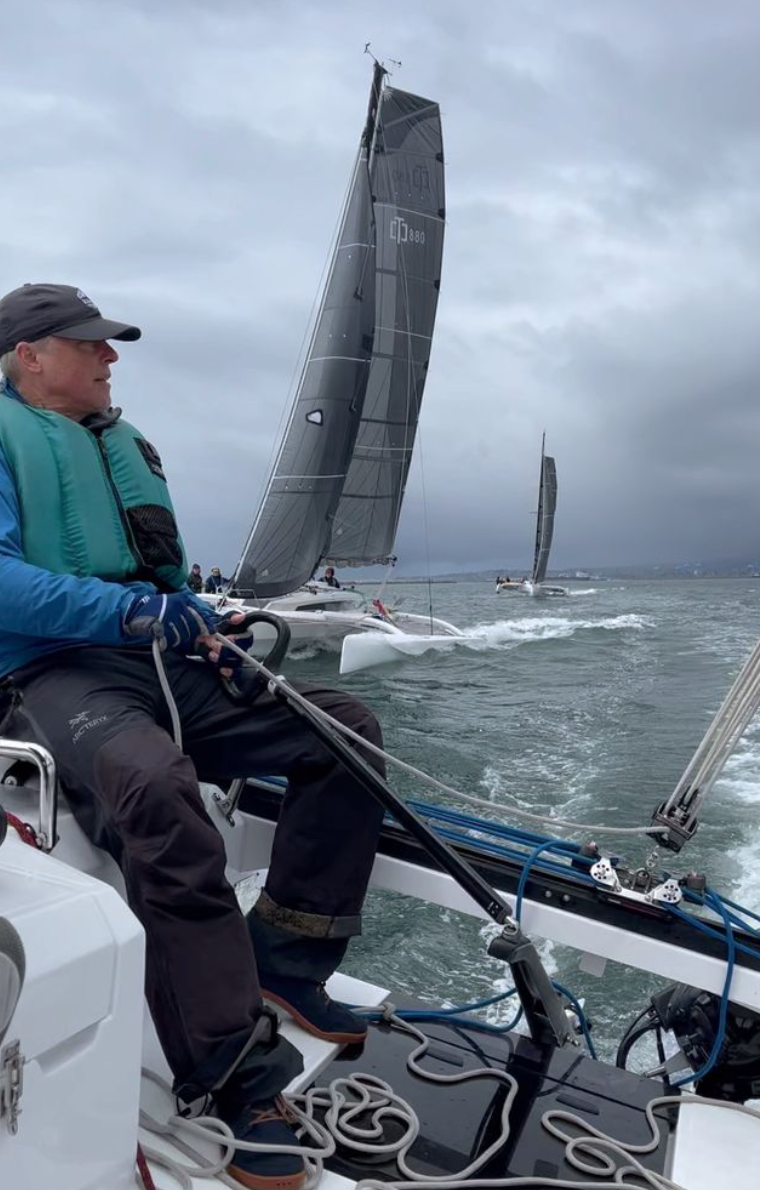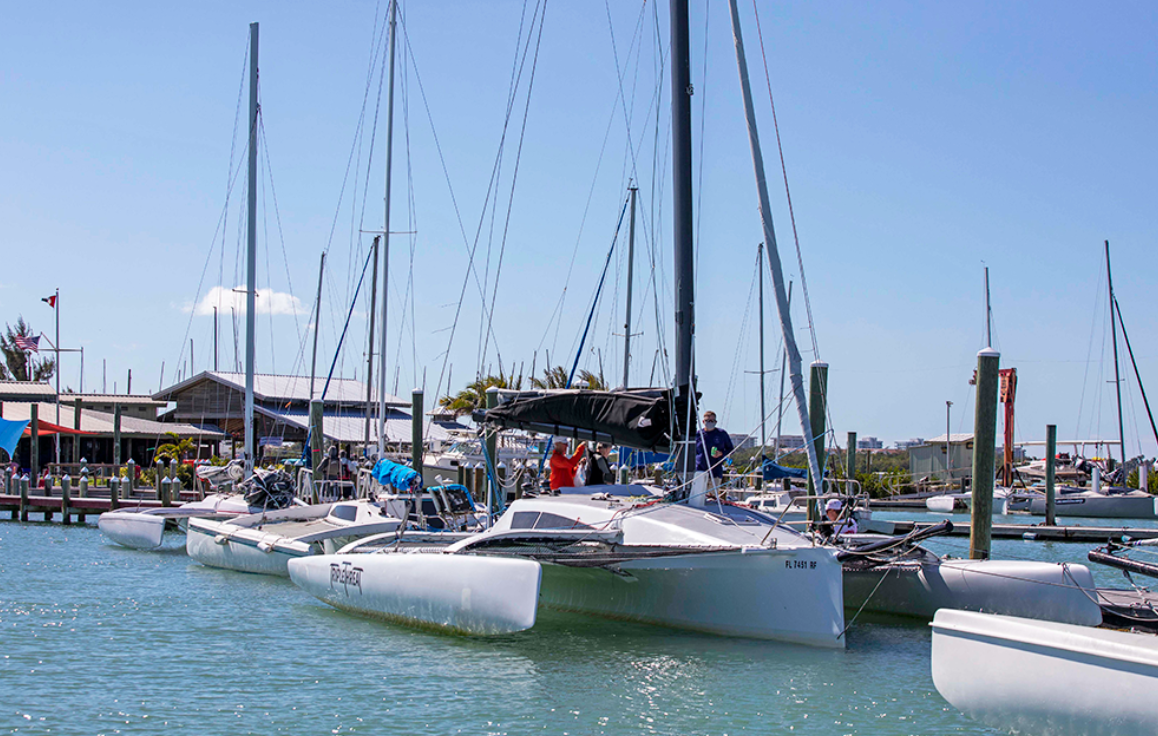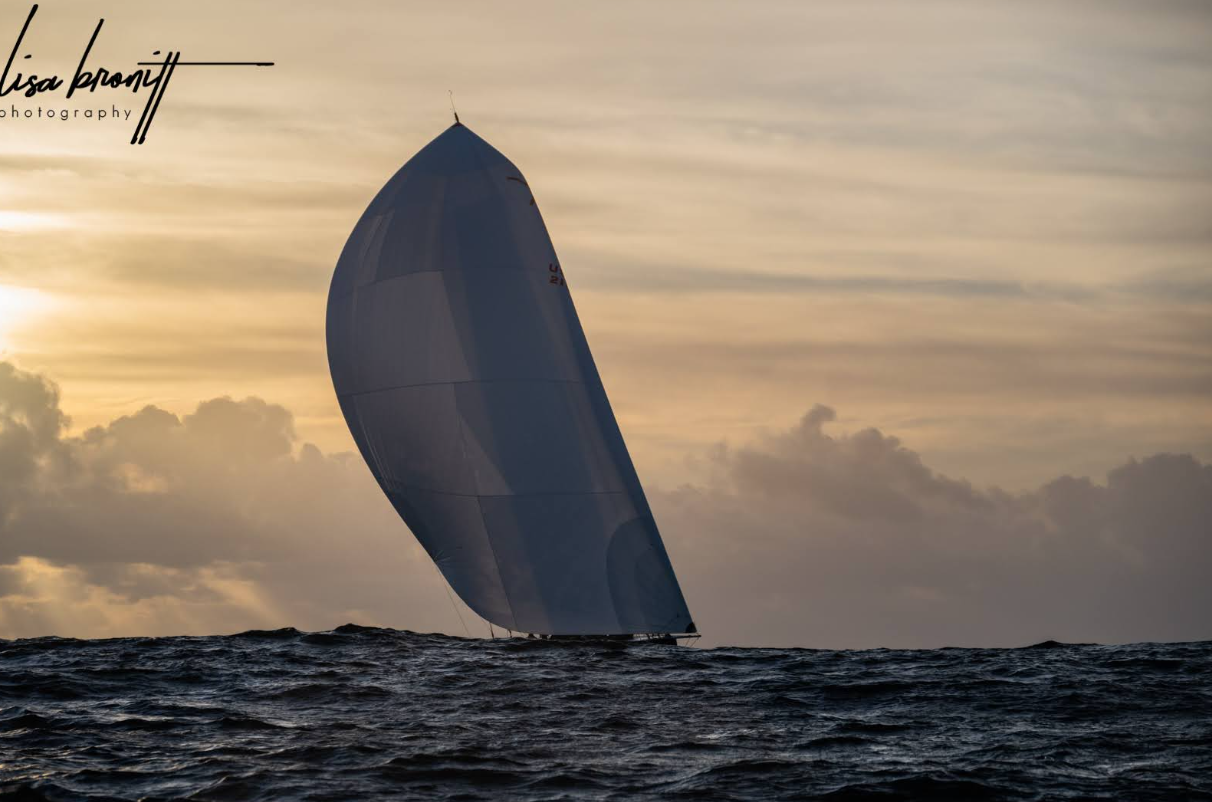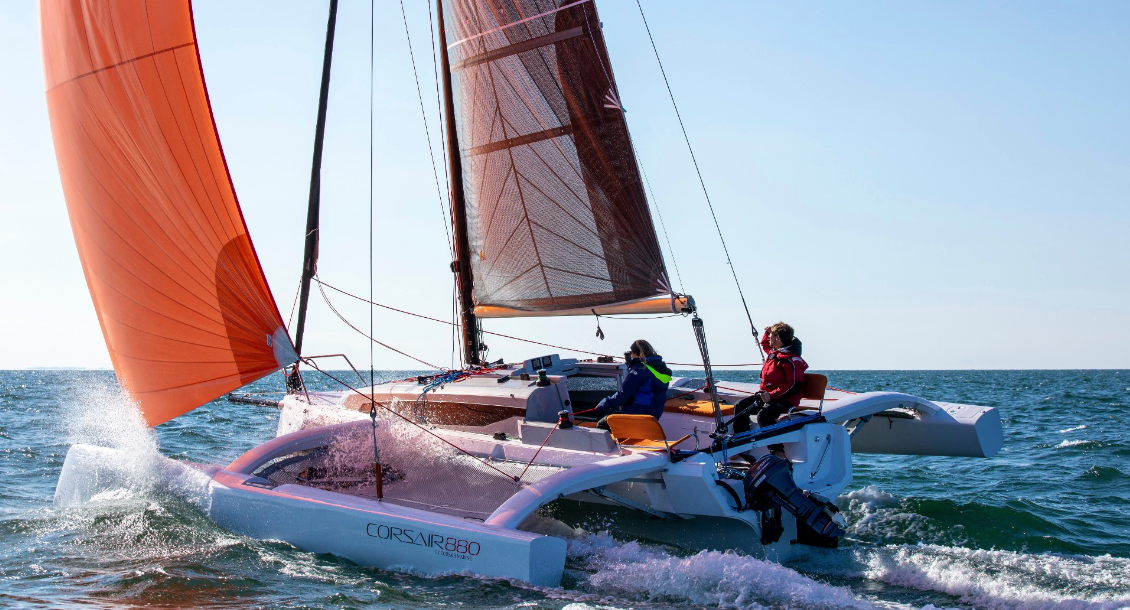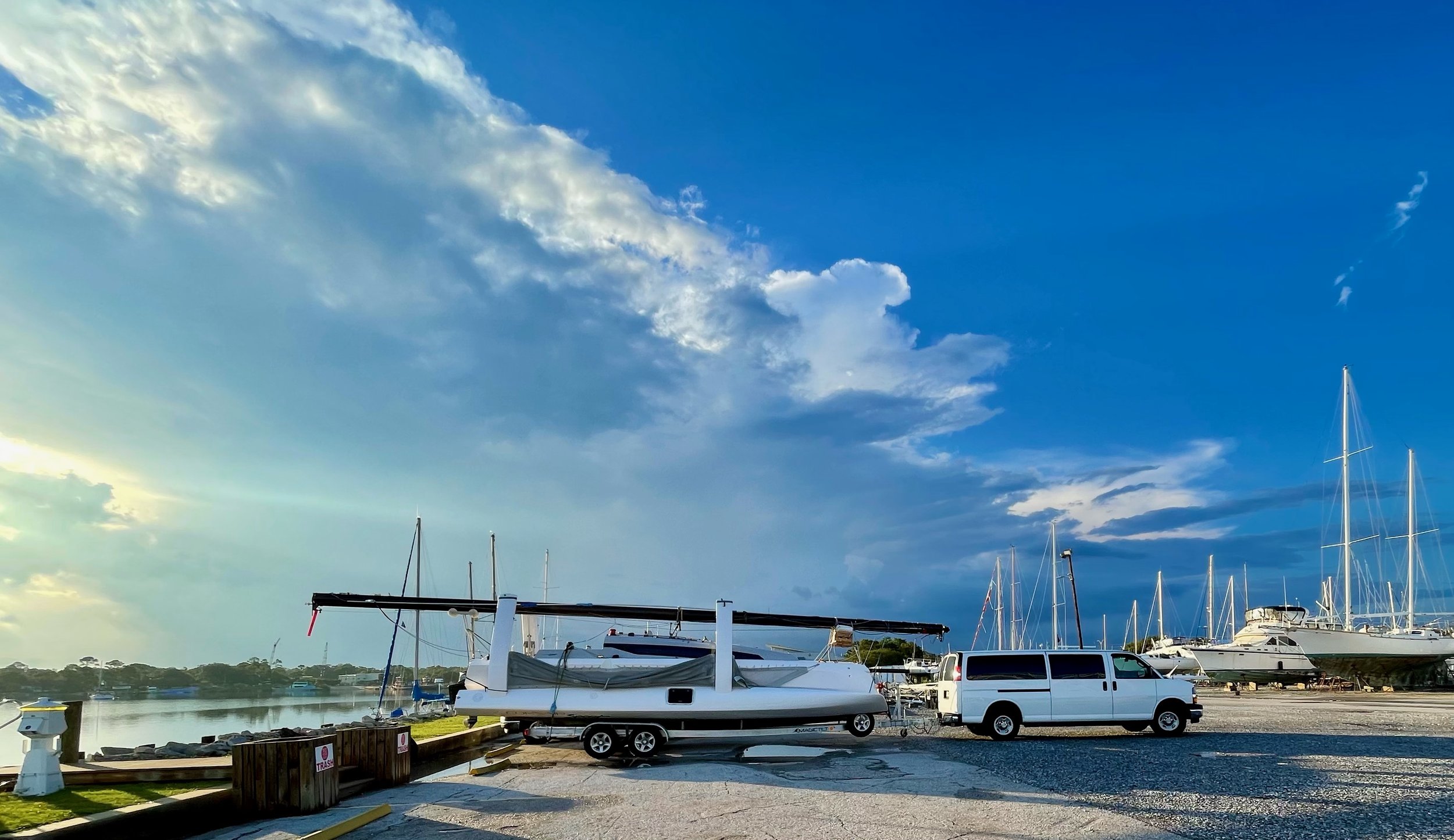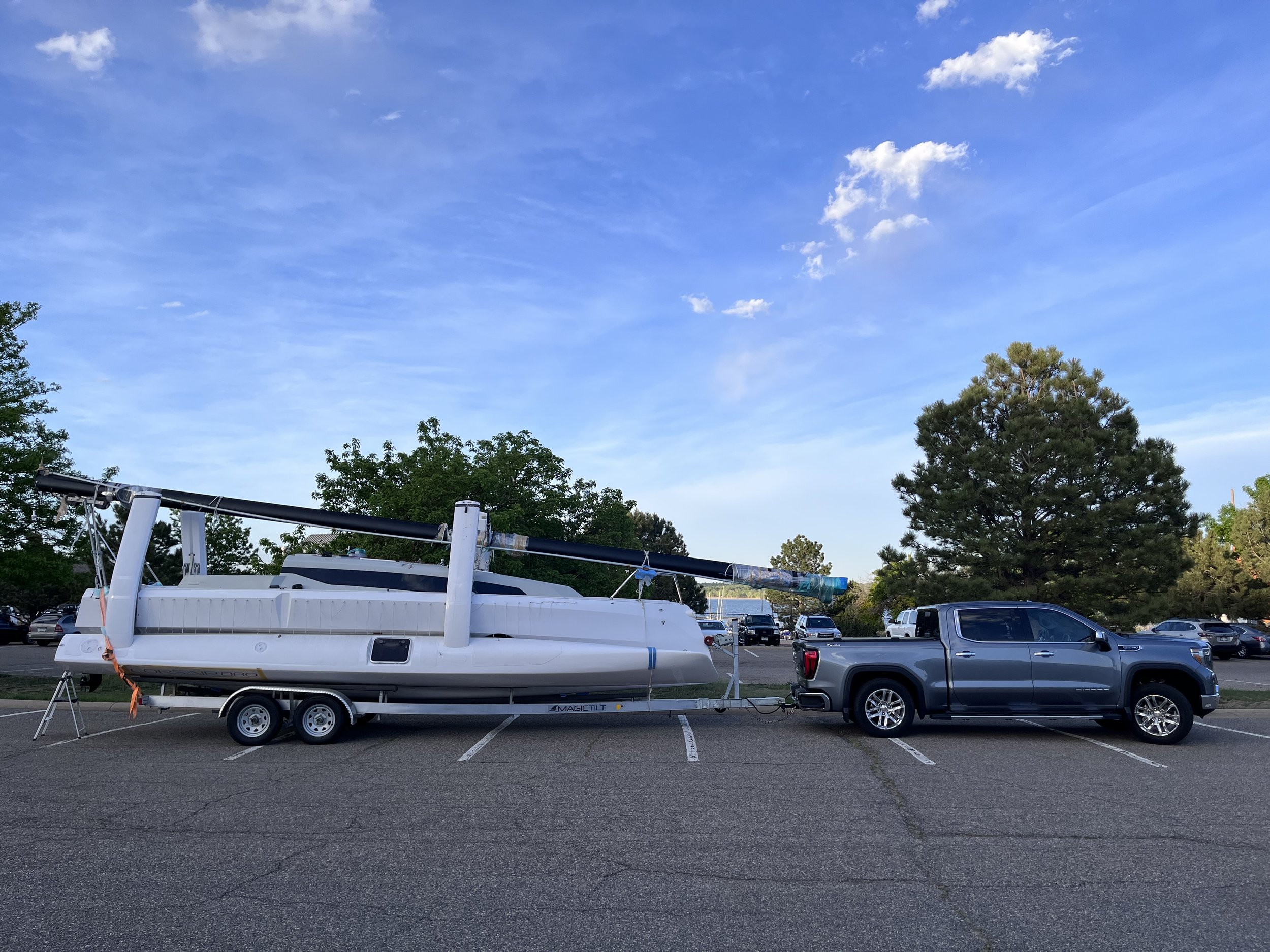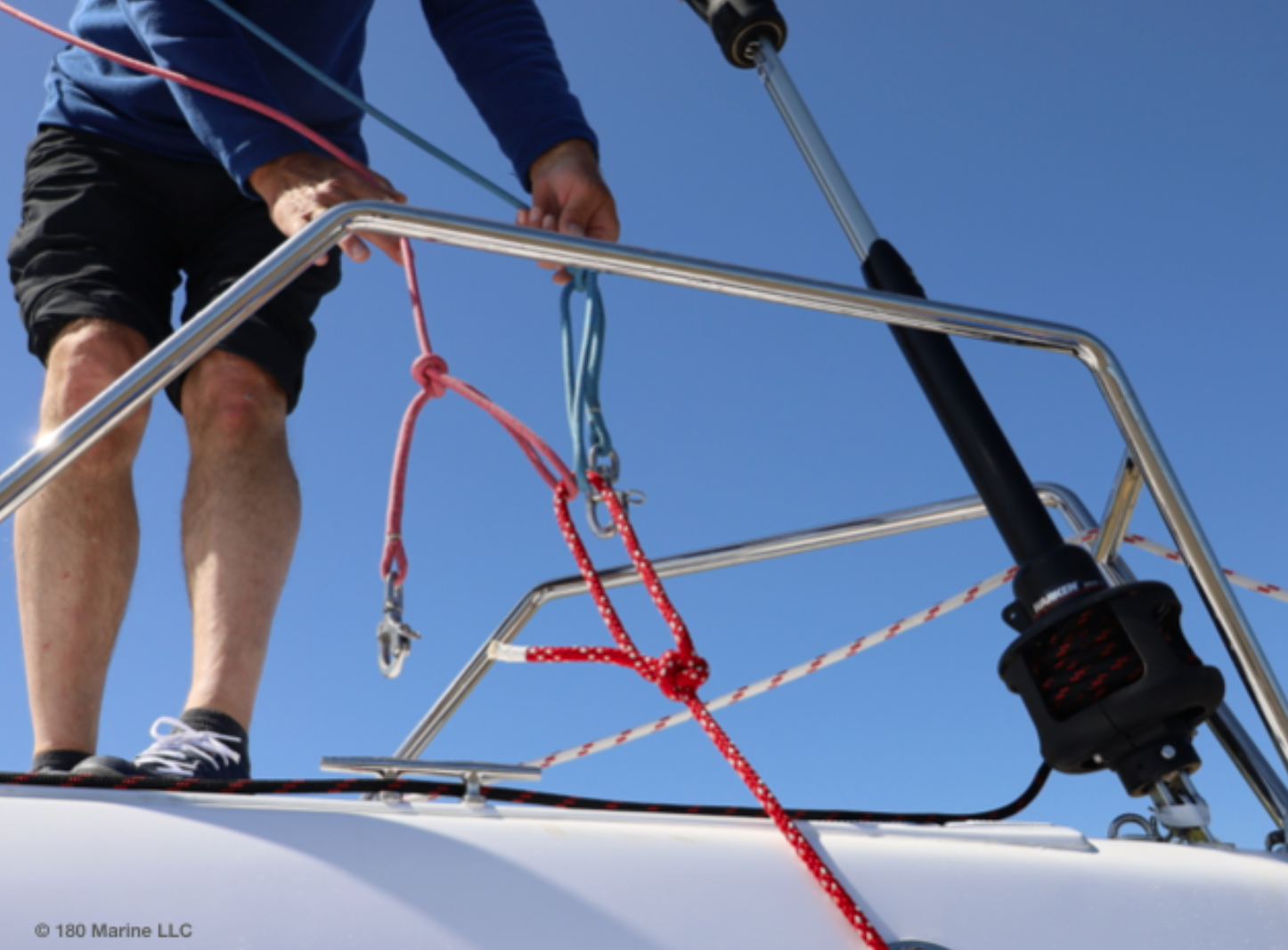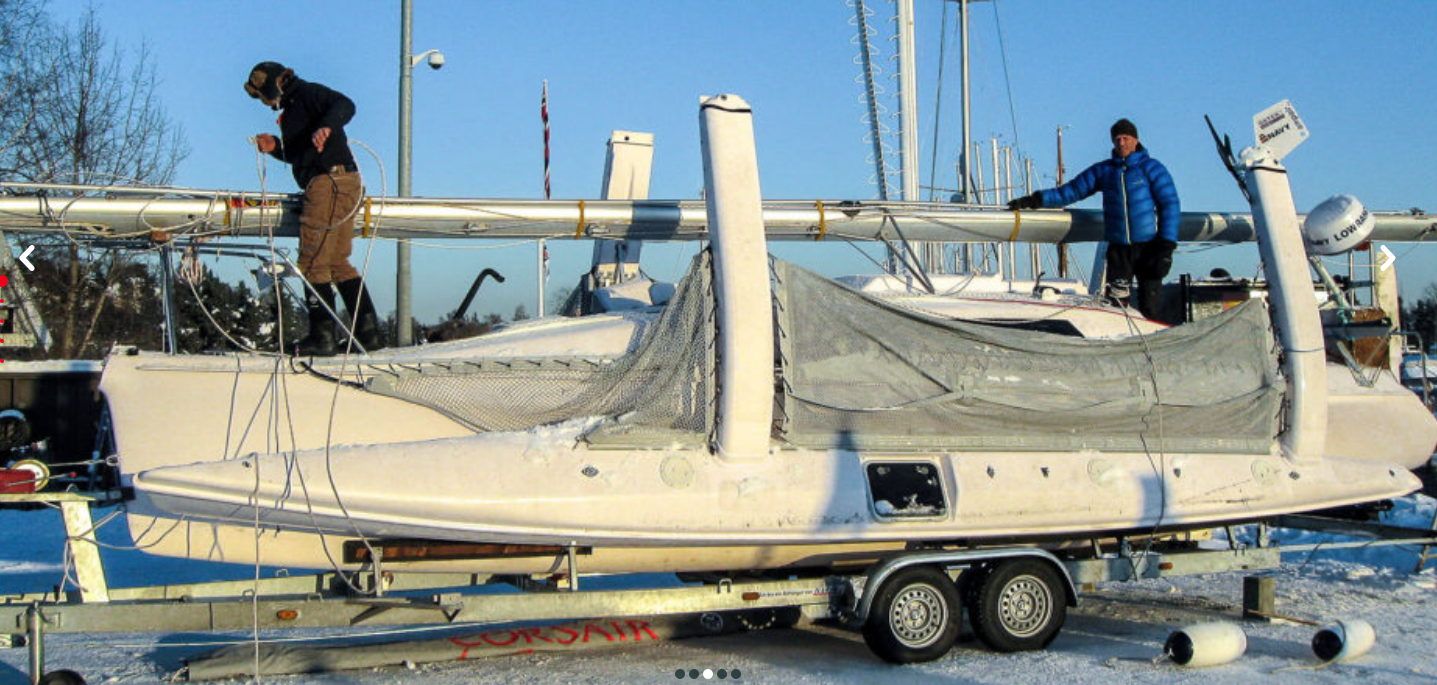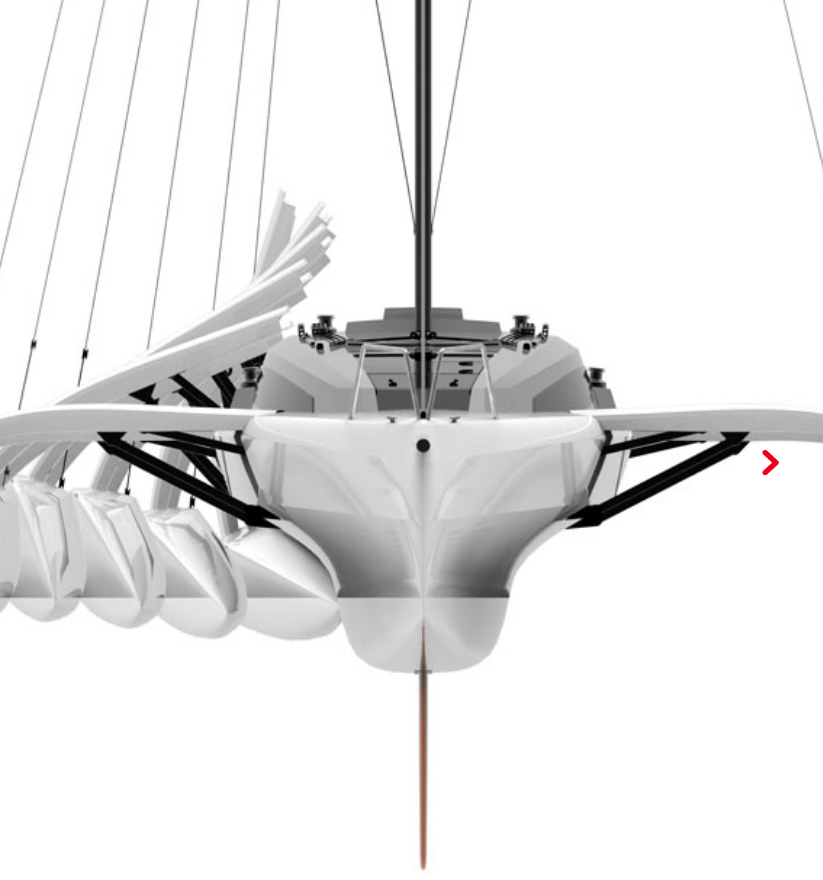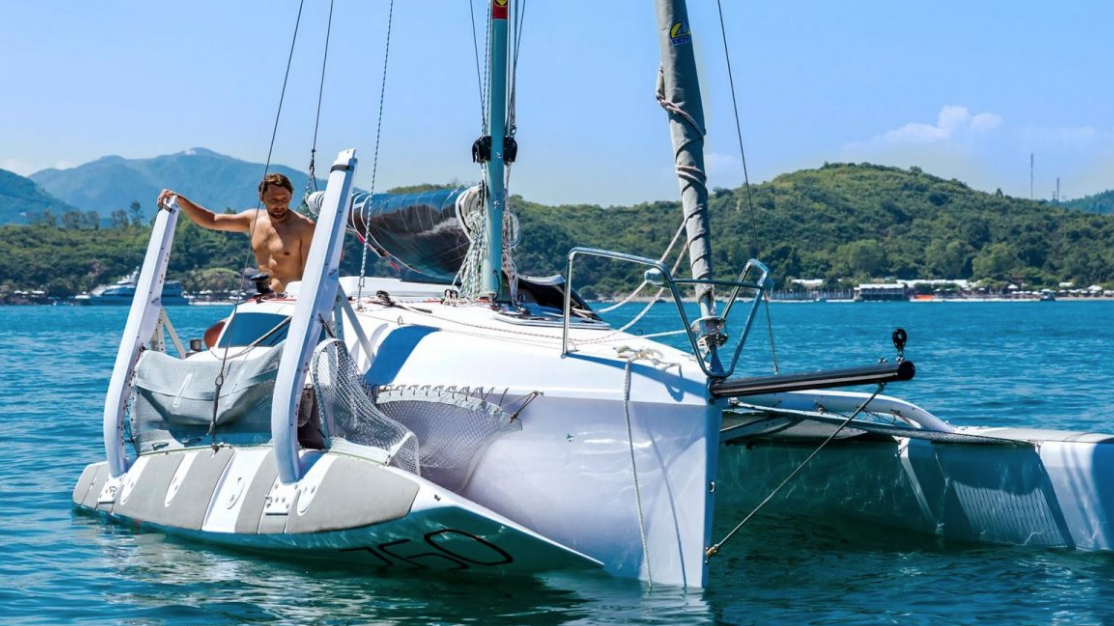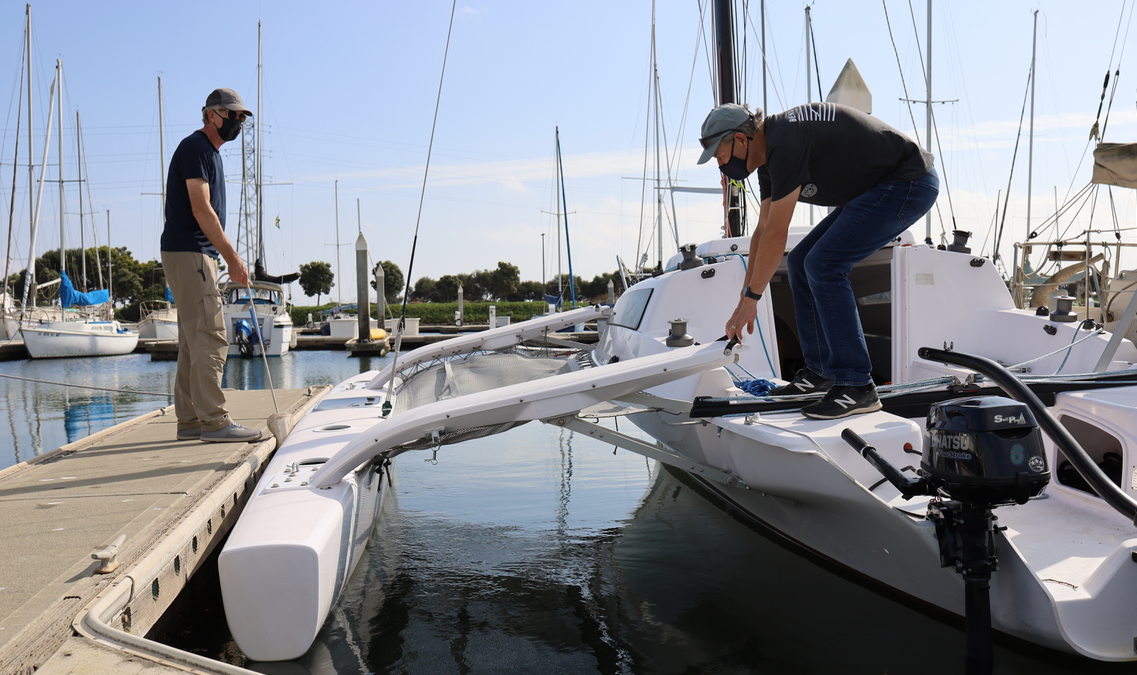Corsair 880 FAQ’s
There are many creature comforts that you’ll appreciate! Check this out.
Corsair 880 Launching
I’ve raced J/80s quite a few years in club settings where you need to get on and off the crane quickly to make room for others who need to launch just as quickly for the event. Here’s how they compare for launching:
The Corsair 880 has no backstay, so in that regard, it’s probably faster to get on and off the crane.
The lifting bridle has four lines that terminate in a single ring at the top. Each line attaches to four “hard points” on the side of the hull near the beam connections.
The ring is big enough to easily slip onto the crane's lifting hook. The 880 can be crane launched by one person, but like the J/80 two crew works better.
On my own Corsairs, we have quick disconnects to attach the lifting bridle in less than 2 minutes and take it off at the same time. For most other racing monohulls you have to be careful not to hook the backstay with the crane arm.
The Corsair 880 is 250 pounds lighter than the J/80, so the same cranes are suitable. It’s 8 feet wide when folded, just like the J/80. 22 feet wide when sailing.
It’s easier to launch at the ramp than a J/80 when needed, MUCH easier because the daggerboard retracts and you don’t need to sink the trailer deep into the water.
The mast is deck-stepped, one-person job, also much easier for one person to raise and lower without extra equipment or assistance.
What are some of the optional creature comforts on the new Corsair 880?
Corsair 880 option - A 22” Television
Watch your favorite films from the comfort of your cabin. Majestic Global was the world's first company to develop and produce a 12 Volt LCD TV over 14 years ago. Fast forward the company's growth and technology advances, Majestic remains a global leader in designing specific TV's that can handle the harsh Marine environment and survive the tough outback conditions. The Majestic products are built with the highest possible standard and used by some of the world's best-known Boat Manufacturers such as Regal Boats, Rinker Boats, Four Winns, Ranger Tugs and many more. You can be assured the quality and reliability as Majestic covers every product with a 3 Year International Warranty.
The World’s first 22" Full HD 12 Volt LED TV with built-in Global HD Tuner that works in over 150 countries. The New Majestic LED222GS is the latest addition to the range with state of the art engineering from Majestic. The LED222GS is packed with new technology such as built-in DVD Player, PVR on DVB-T Signals, Majestic Link, ARC, USB for Multi Media and MMMI for iOS and Android capable devices to give you full HD video interface.
Corsair 880 option - A 30L Drawer Fridge
Keep your favorite foods fresh and secure even in the roughest conditions! Equipped with high-tech compressors, the well-proven Dometic Coolmatic CD 30 refrigerator provides outstanding energy-efficient refrigeration for mobile applications. Its operation is reliable even in tilted positions and high ambient temperatures working economically, quietly and are ideal to run with solar panels.
Corsair 880 option - Air Conditioning
Stay cool onboard your Corsair this summer with the 2,730BTU (12V) air conditioner from Cold Chilli.
Cold Chilli marine air-conditioning units are specially designed for boat and yacht use. The units are produced out of the finest materials regardless of marine use. The condenser is made of CuNi alloy in monolithic structure to avoid galvanic corrosion. The unit is enclosed in a powder-coated and sound insulated INOX casing. Powering directly from the service battery bank eliminates the need for AC generator or shore power. Very silent operation of the unit allows people to sleep in the same room with the unit running. The cold chili air conditioner weighs just 30 kg and is perfect when combined with a 35a charger and portable generator, allowing extended cruising even in the warmest climates.
DVD Player, PVR on DVB-T Signals, Majestic Link, ARC, USB for Multi Media and MMMI for iOS and Android capable devices to give you full HD video interface.
Am I correct in assuming that requires either running a generator or connection to shore power?
Yes, you need a generator or shore power. Interior fridge is available too or an electric ice chest in the cockpit for the first time!
Corsair 880 option - Hot Water Heater
Unique 12V Water Heater - Hot Water On The Go For Outboard Boats. at just 6.8kg the S360EW is an electric-only 12V Water Heater brand new to the marine industry. Ideal for outboards the water heater connects to 12V power supply meaning there is no need for a generator, inverter or shore power. The neat design of the water heater means it can fit in compact spaces and electric-only means installation is no longer tied to the engine room. Rather the water heater can be fitted in the galley, transom or other storage spaces simplifying installation and allowing for more space on board.
The Water Heater has a rapid heat-up time with hot water in less than an hour and is highly efficient with heat retention of up to 10 hours. The heater is ideal for use with deck showers and warming wetsuits providing 3 Gals of hot water at a time.
With all Whale Water Heaters, safety comes to the forefront and the 12V water heater is no different with integrated temperature and pressure valve plus a thermal cut-out and heat Indication output. The heater also has an integrated anode for longer life and the relay allows for switching at the helm for ease of use and control.
Corsair 880 option - Bluetooth Stereo
Enjoy the flexibility in audio control options with Bluetooth audio streaming, AM/FM radio, USB and AUX audio connections available, providing incredible audio reproduction and smooth frequency response with Fusion’s Digital Signal Processing (DSP). Voice prompts guide operation of the stereo, and the versatility of three simple mounting options available lets you install your stereo where it is best suited.
The Fusion Panel-Stereo is a seriously versatile solution for quality in-cabin audio entertainment.
FEATURES
HI-FI AUDIO REPRODUCTION THROUGH DSP: Digital Signal Processing optimizes the entire audio chain, ensuring the speaker components always receive premium quality audio for an efficient, incredibly smooth frequency response and Hi-Fi audio reproduction at every volume level.
PLUG & PLAY ALL-IN-ONE AUDIO ENTERTAINMENT SOLUTION: With built-in Class-D amplification, stereo source selection of Bluetooth, AM/FM radio, USB and AUX, two 3” speakers and a large surface bass radiator all combined in a perfectly tuned enclosure, the Panel-Stereo provides a one-product solution for in-cabin audio entertainment. All the acoustic parameters have been calculated by our acoustic engineers and taken into consideration when designing the enclosure to ensure quality audio reproduction wherever the Panel-Stereo is installed.
SIMPLE, VERSATILE AND COST-EFFECTIVE INSTALLATION: Designed for easy installation, the Panel-Stereo only requires 12V dc power, ground and AM/FM antenna connections. With three mounting options available to create a professional finish with a maximum of only one cut-out required, the Panel-Stereo is a seriously versatile solution. The 43mm (1.69in.) surface mounting spacer allows installation directly onto any flat surface with no cut-out required, and its shallow depth allows for installation in a shallow wall cavity, either installed flush or flat for a premium finish.
BLUETOOTH WIRELESS TECHNOLOGY: Stream your family’s favorite soundtrack from any compatible Bluetooth enabled device with Bluetooth audio streaming. Control is available from either the Panel-Stereo or the connected device.
VOICE PROMPTS: Audible feedback is given as you cycle through music sources, change stations and save presets. This voice prompts are available in English, French, German, Dutch, Italian, Japanese, Mandarin, and Spanish.
FUSION-LINK™ CONTROL: Enjoy the freedom of wireless control of your audio entertainment from your compatible Apple or Android device with the free Fusion-Link app via Bluetooth. Download the free Fusion-Link Lite app to enable wireless control via ANT technology from your compatible Garmin watch
Enjoy the flexibility in audio control options with Bluetooth audio streaming, AM/FM radio, USB and AUX audio connections available, providing incredible audio reproduction and smooth frequency response with Fusion’s Digital Signal Processing (DSP). Voice prompts guide operation of the stereo, and the versatility of three simple mounting options available lets you install your stereo where it is best suited.
The Fusion Panel-Stereo is a seriously versatile solution for quality in-cabin audio entertainment.
READ MORE FAQ’S ON THE CORSAIR 880 >>
